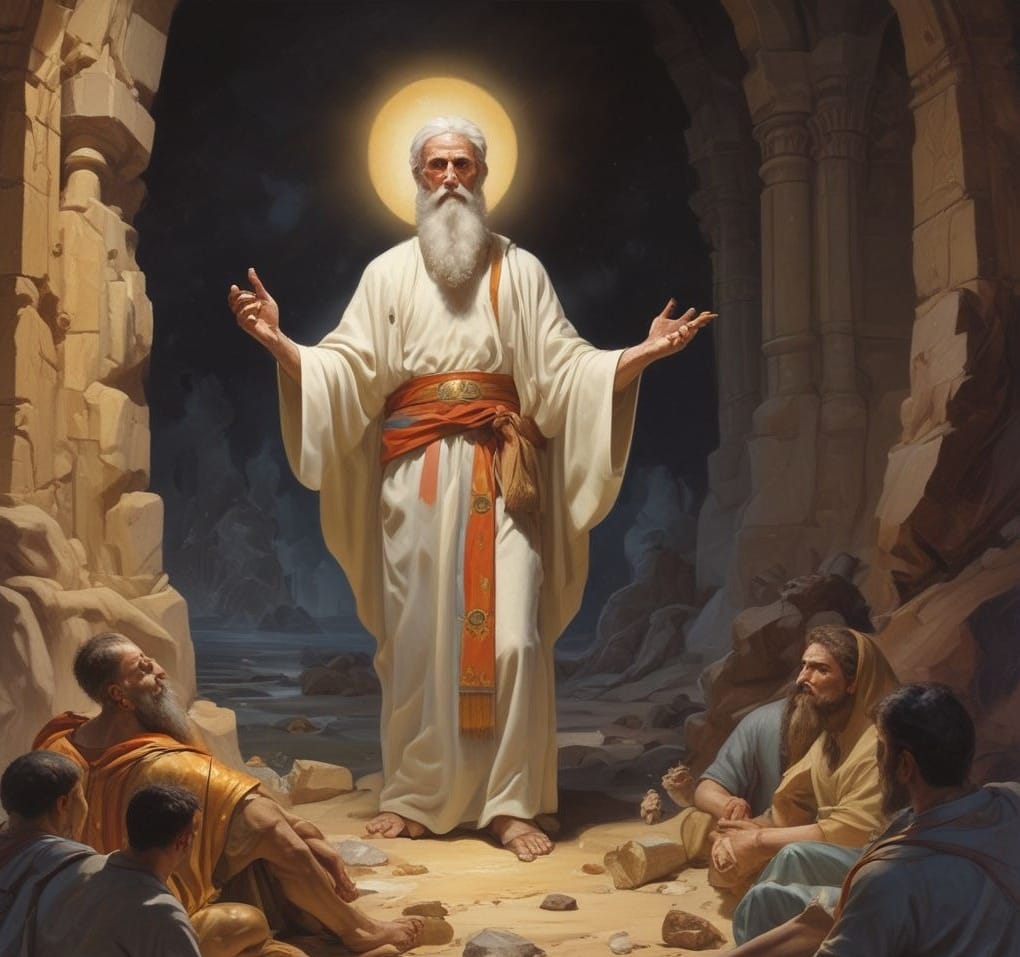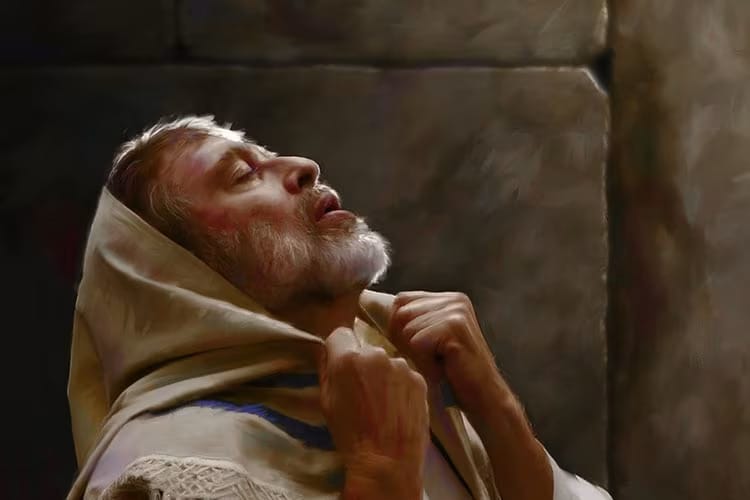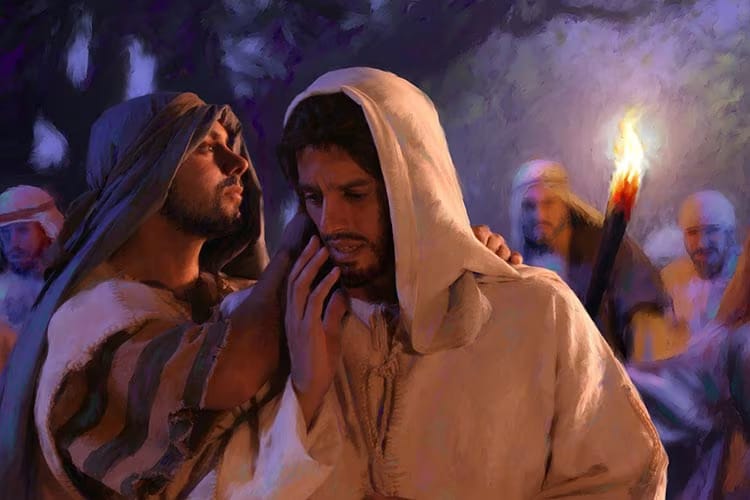The 12 Disciples of Jesus Christ: Biographies and Key Lessons
Introduction
The 12 disciples of Jesus Christ are foundational figures in Christianity, chosen by Jesus himself to spread his teachings and establish the early church. These men, often referred to as the apostles, came from diverse backgrounds—ranging from humble fishermen to a tax collector—and their lives were transformed through their encounters with Jesus. Their stories, recorded in the New Testament and supplemented by Christian tradition, offer not only historical insight but also timeless spiritual lessons for modern believers.
In this article, we will explore the lives of each of the 12 disciples of Jesus Christ, providing a short biography that covers their background, their role during Jesus’ ministry, their contributions to the early church, and the traditional accounts of their deaths. Following each biography, we will reflect on key lessons that can inspire and guide Christians today. These lessons highlight themes such as faith, forgiveness, courage, and perseverance, demonstrating how the disciples’ experiences continue to resonate in the modern world.
Whether you are a lifelong Christian seeking to deepen your understanding of the apostles or a curious reader exploring biblical history, this article offers a comprehensive and accessible guide to the 12 disciples of Jesus Christ. Through their stories, we can gain a greater appreciation for the foundations of the Christian faith and find inspiration for our own spiritual journeys.
Simon Peter

Biography
Background: Simon Peter, originally named Simon, was a fisherman from the town of Bethsaida in Galilee. He was married and likely lived in Capernaum, where Jesus often stayed during his ministry.
Calling: Peter was called by Jesus while fishing on the Sea of Galilee. In Matthew 4:18–20, Jesus says, “Follow me, and I will make you fishers of men.” Peter immediately left his nets and followed Jesus, becoming one of his closest disciples.
Life with Jesus: Peter is one of the most prominent figures in the Gospels. He is often portrayed as impulsive and passionate, such as when he confessed Jesus as the Messiah (Matthew 16:16) or when he walked on water (Matthew 14:28–31). However, Peter also famously denied Jesus three times during his trial (Luke 22:54–62), a moment of weakness that later became a source of profound repentance and restoration.
Post-Resurrection Role: After Jesus’ resurrection, Peter became a leader in the early church. He preached boldly at Pentecost (Acts 2), where thousands came to faith, and played a key role in spreading the gospel to both Jews and Gentiles. Peter is also credited with writing two epistles in the New Testament, 1 Peter and 2 Peter.
Death: According to Christian tradition, Peter was martyred in Rome around 64 AD during the reign of Emperor Nero. He was crucified upside down, as he felt unworthy to die in the same manner as Jesus.
Key Lessons
Transformation Through Faith: Peter’s journey from a simple fisherman to a foundational leader in the church demonstrates the transformative power of faith. His life shows that God can use ordinary people for extraordinary purposes.
Forgiveness and Restoration: Despite denying Jesus, Peter was forgiven and restored, illustrating God’s grace and the possibility of redemption for all believers.
Courage in Leadership: Peter’s boldness in preaching the gospel, even in the face of persecution, serves as an example of courageous leadership for Christians today.
Andrew

Biography
Background: Andrew was the brother of Simon Peter and also a fisherman from Bethsaida. He was a disciple of John the Baptist before meeting Jesus.
Calling: Andrew was one of the first disciples to follow Jesus. In John 1:40–42, after hearing John the Baptist declare Jesus as the “Lamb of God,” Andrew immediately followed Jesus and later brought his brother Peter to meet him.
Life with Jesus: Andrew is often seen in the background of the Gospels, but he played a key role in several events, such as introducing the boy with five loaves and two fish during the feeding of the 5,000 (John 6:8–9). He was also present when Jesus predicted the destruction of the temple (Mark 13:3).
Post-Resurrection Role: Tradition holds that Andrew preached the gospel in regions such as Scythia (modern-day Ukraine and Russia) and Greece. He is particularly revered in the Eastern Orthodox Church.
Death: According to tradition, Andrew was crucified on an X-shaped cross in Patras, Greece, around 60 AD. He reportedly preached from the cross for two days before dying.
✨ For more explorations into the Scriptures and insights on God’s divine plan, visit our Bible blog filled with faith-inspired articles.
Key Lessons
Evangelism and Humility: Andrew’s role in bringing others to Jesus, including his brother Peter, highlights the importance of personal evangelism and humility in service.
Faithfulness in Small Things: Andrew’s quiet but faithful presence reminds us that even small acts of service can have a significant impact in God’s kingdom.
Perseverance in Suffering: Andrew’s willingness to endure martyrdom while continuing to preach demonstrates the power of perseverance and faith in the face of suffering.
James (Son of Zebedee)

Biography
Background: James, the son of Zebedee, was a fisherman and the older brother of John. He and his brother were nicknamed “Sons of Thunder” by Jesus, possibly due to their fiery temperaments.
Calling: James was called by Jesus alongside his brother John while they were mending nets with their father (Matthew 4:21–22). They left their boat and followed Jesus immediately.
Life with Jesus: James was part of Jesus’ inner circle, along with Peter and John. He witnessed key events such as the Transfiguration (Matthew 17:1–13) and Jesus’ agony in the Garden of Gethsemane (Matthew 26:36–46). James also expressed a desire for greatness, asking to sit at Jesus’ right hand in his kingdom (Mark 10:35–45).
Post-Resurrection Role: James was the first of the apostles to be martyred. According to Acts 12:1–2, he was beheaded by King Herod Agrippa I around 44 AD.
Death: James’ martyrdom is one of the few apostle deaths recorded in the Bible. Tradition suggests he preached in Judea and possibly Spain before his death.
Key Lessons
Courage and Sacrifice: James’ willingness to die for his faith exemplifies the courage and sacrifice required of those who follow Jesus.
Humility in Ambition: James’ request for a place of honor teaches us about the dangers of selfish ambition and the importance of servant leadership.
Zeal for God’s Kingdom: His nickname, “Son of Thunder,” reflects a passionate zeal that, when directed toward God’s purposes, can be a powerful force for good.
John

Biography
Background: John, the younger brother of James, was also a fisherman from Galilee. He is often referred to as the “disciple whom Jesus loved” (John 13:23).
Calling: Like his brother, John was called by Jesus while mending nets (Matthew 4:21–22). He became one of Jesus’ closest disciples.
Life with Jesus: John was present at many significant moments, including the Transfiguration and the Last Supper, where he reclined next to Jesus. He was also entrusted with caring for Jesus’ mother, Mary, after the crucifixion (John 19:26–27).
Post-Resurrection Role: John played a central role in the early church, particularly in Ephesus. He authored the Gospel of John, three epistles (1, 2, and 3 John), and the Book of Revelation. His writings emphasize love, truth, and the divinity of Christ.
Death: Unlike the other apostles, John is believed to have died of natural causes in old age, around 98 AD, after being exiled to the island of Patmos, where he received the visions recorded in Revelation.
✨ For more explorations into the Scriptures and insights on God’s divine plan, visit our Bible blog filled with faith-inspired articles.
Key Lessons
Love and Intimacy with God: John’s close relationship with Jesus teaches us the importance of cultivating intimacy with God through prayer and devotion.
Endurance in Faith: John’s long life and ministry, even in exile, demonstrate the value of endurance and faithfulness over time.
Theological Depth: His writings encourage believers to pursue a deeper understanding of God’s truth and to live out their faith with love and conviction.
Philip

Biography
Background: Philip was from Bethsaida, the same town as Peter and Andrew. Little is known about his life before meeting Jesus.
Calling: Philip was called directly by Jesus, who simply said, “Follow me” (John 1:43). Philip then brought his friend Nathanael (Bartholomew) to meet Jesus.
Life with Jesus: Philip is often portrayed as practical and inquisitive. He questioned how Jesus would feed the 5,000 (John 6:5–7) and asked Jesus to show them the Father (John 14:8–9).
Post-Resurrection Role: Tradition suggests that Philip preached in Greece, Syria, and Phrygia (modern-day Turkey). He is sometimes confused with Philip the Deacon, who appears in Acts.
Death: According to tradition, Philip was martyred in Hierapolis, either by crucifixion or beheading, around 80 AD.
Key Lessons
Evangelism and Friendship: Philip’s role in bringing Nathanael to Jesus highlights the power of personal relationships in sharing the gospel.
Seeking Clarity: Philip’s questions to Jesus remind us that it’s okay to seek understanding and clarity in our faith journey.
Practical Faith: His practical concerns about feeding the crowd teach us to trust God’s provision even when circumstances seem impossible.
Bartholomew (Nathanael)

Biography
Background: Bartholomew, also known as Nathanael, was from Cana in Galilee. He was likely a friend of Philip, who introduced him to Jesus.
Calling: In John 1:45–51, Philip tells Nathanael about Jesus, but Nathanael is initially skeptical, asking, “Can anything good come out of Nazareth?” However, after meeting Jesus, he declares, “Rabbi, you are the Son of God!”
Life with Jesus: Bartholomew is not mentioned frequently in the Gospels, but he was present with the other disciples during key events, such as the resurrection appearances.
Post-Resurrection Role: Tradition holds that Bartholomew preached in India and Armenia, where he spread the gospel and performed miracles.
Death: According to various accounts, Bartholomew was martyred in Armenia, either by being flayed alive or beheaded, around 70 AD.
Key Lessons
Overcoming Prejudice: Nathanael’s initial skepticism about Jesus’ hometown teaches us to overcome preconceived notions and be open to God’s work in unexpected places.
Sincerity in Faith: Jesus described Nathanael as “an Israelite indeed, in whom there is no deceit” (John 1:47), highlighting the value of sincerity and integrity in our relationship with God.
Bold Witness: Bartholomew’s missionary work in distant lands encourages believers to boldly share their faith, even in unfamiliar or hostile environments.
Matthew (Levi)

Biography
Background: Matthew, also known as Levi, was a tax collector in Capernaum. Tax collectors were often despised by their fellow Jews for collaborating with the Roman authorities.
Calling: Jesus called Matthew while he was sitting at his tax booth, saying, “Follow me” (Matthew 9:9). Matthew immediately left his lucrative but unpopular profession to follow Jesus.
Life with Jesus: Matthew hosted a feast for Jesus and invited other tax collectors and sinners, demonstrating Jesus’ mission to reach the outcasts (Matthew 9:10–13). He was also present at the Last Supper and the Great Commission.
Post-Resurrection Role: Matthew is traditionally credited with authoring the Gospel of Matthew, which emphasizes Jesus as the fulfillment of Old Testament prophecies. He is believed to have preached in Ethiopia and Persia.
Death: According to tradition, Matthew was martyred with a halberd (a spear-like weapon) in Ethiopia around 60 AD.
Key Lessons
Grace and Redemption: Matthew’s transformation from a tax collector to an Apostle illustrates God’s grace and the possibility of redemption for all, regardless of past sins.
Hospitality and Inclusion: His feast for Jesus teaches us the importance of welcoming others, especially those who are marginalized or overlooked.
Faithfulness in Witness: Matthew’s Gospel, with its focus on Jesus’ teachings, encourages believers to faithfully record and share the truth of the gospel.
Thomas (Didymus)

Biography
Background: Thomas, also called Didymus (meaning “twin”), is one of the more enigmatic disciples. Little is known about his life before following Jesus.
Calling: Thomas was likely called along with the other disciples, though his specific calling is not recorded in the Gospels.
Life with Jesus: Thomas is best known for doubting Jesus’ resurrection until he could see and touch the wounds (John 20:24–29). However, he also showed courage, such as when he urged the disciples to go with Jesus to Judea despite the danger (John 11:16).
Post-Resurrection Role: Tradition holds that Thomas preached in India, where he established Christian communities. The Mar Thoma Church in India traces its origins to his ministry.
Death: According to tradition, Thomas was martyred in Mylapore, India, around 72 AD, speared to death by local authorities.
✨ For more explorations into the Scriptures and insights on God’s divine plan, visit our Bible blog filled with faith-inspired articles.
Key Lessons
Doubt Leading to Faith: Thomas’ doubt ultimately led to a deeper confession of faith (“My Lord and my God!”), teaching us that honest questions can strengthen our belief.
Courage in Uncertainty: His willingness to follow Jesus into danger reminds us to trust God even when the path is unclear.
Evidence-Based Belief: Thomas’ desire for proof encourages believers to seek a faith grounded in evidence and personal experience.
James (Son of Alphaeus)

Biography
Background: James, the son of Alphaeus, is one of the lesser-known disciples. He is sometimes called “James the Less” to distinguish him from James the son of Zebedee.
Calling: Like several other disciples, James was called by Jesus to follow him, though the specific details are not recorded.
Life with Jesus: James is mentioned in the lists of the apostles but does not have any recorded words or actions in the Gospels.
Post-Resurrection Role: Tradition suggests that James preached in Judea and possibly Egypt, though little is known about his ministry.
Death: According to some accounts, James was stoned to death in Jerusalem or thrown from the temple and then beaten with a club.
Key Lessons
Faithful Service in Obscurity: James’ quiet faithfulness reminds us that not all service needs to be public or celebrated; God values our obedience, even in the background.
Perseverance in Ministry: Despite the lack of recorded details, James’ commitment to spreading the gospel encourages us to persevere in our own ministries, even when results are not immediately visible.
Unity in Diversity: As one of the lesser-known disciples, James represents the diversity of the apostolic group and the importance of every member in the body of Christ.
Jude (Thaddaeus)

Biography
Background: Jude, also known as Thaddaeus or Lebbaeus, may have been a brother of James the son of Alphaeus and possibly a cousin of Jesus.
Calling: Jude was called by Jesus to be one of the 12 disciples of Jesus Christ, though his specific calling is not detailed in the Gospels.
Life with Jesus: Jude is mentioned in the lists of the apostles and is recorded asking Jesus a question at the Last Supper: “Lord, how is it that you will manifest yourself to us, and not to the world?” (John 14:22).
Post-Resurrection Role: Tradition holds that Jude preached in Syria, Mesopotamia, and Persia, often alongside Simon the Zealot.
Death: According to tradition, Jude was martyred in Persia, either by being shot with arrows or clubbed to death.
Key Lessons
Seeking Understanding: Jude’s question at the Last Supper encourages believers to seek deeper understanding of God’s plans and purposes.
Perseverance in Mission: His missionary work in challenging regions teaches us the importance of perseverance and dedication to the gospel.
Unity in Partnership: Jude’s collaboration with Simon the Zealot highlights the power of unity and partnership in ministry.
Simon the Zealot

Biography
Background: Simon the Zealot is identified as a member of the Zealots, a Jewish political group that sought to overthrow Roman rule. This background suggests he was passionate about Jewish independence.
Calling: Simon was called by Jesus to be one of the 12 disciples of Jesus Christ, though the specifics are not recorded.
Life with Jesus: Like several other disciples, Simon is mentioned in the lists of the apostles but has no recorded words or actions in the Gospels.
Post-Resurrection Role: Tradition suggests that Simon preached in Egypt, North Africa, and Persia, often alongside Jude.
Death: According to various accounts, Simon was martyred in Persia, either by being sawed in half or crucified.
Key Lessons
Zeal for God’s Kingdom: Simon’s background as a Zealot teaches us to channel our passions and zeal toward God’s purposes rather than worldly agendas.
Unity Despite Differences: His inclusion among the disciples, alongside Matthew the tax collector, demonstrates the power of the gospel to unite people from diverse and even opposing backgrounds.
Faithfulness in Service: Simon’s quiet but faithful service reminds us that every role in God’s kingdom is valuable, regardless of recognition.
Judas Iscariot

Biography
Background: Judas Iscariot was the treasurer for the disciples, responsible for managing their finances. He is often portrayed as greedy, as he pilfered money from the group’s funds (John 12:6).
Calling: Judas was chosen by Jesus to be one of the 12 disciples of Jesus Christ, though his motivations for following Jesus are unclear.
Life with Jesus: Judas is infamous for betraying Jesus to the religious authorities for 30 pieces of silver (Matthew 26:14–16). He later regretted his actions and attempted to return the money, but ultimately hanged himself (Matthew 27:3–5).
Post-Resurrection Role: Judas died before the resurrection, and his place among the apostles was later filled by Matthias (Acts 1:23–26).
Death: Judas’ death is recorded in the Bible as suicide by hanging, though Acts 1:18 describes a different account where he fell headlong and his body burst open.
Key Lessons
The Dangers of Betrayal: Judas’ story serves as a sobering reminder of the consequences of betraying trust, especially in our relationship with God.
God’s Sovereignty: Despite Judas’ betrayal, God’s plan for salvation was fulfilled, teaching us that God can bring good even out of human failure.
The Importance of Repentance: Judas’ regret lacked true repentance, highlighting the need for sincere confession and turning back to God when we sin.
Conclusion
The 12 disciples of Jesus Christ were ordinary men who, through their encounters with Jesus, became extraordinary witnesses to the gospel. Their diverse backgrounds—from fishermen to tax collectors to political zealots—demonstrate that God calls people from all walks of life to serve his purposes. Despite their flaws, failures, and doubts, these men were transformed by their faith and went on to lay the foundation for the Christian church.
Their stories offer timeless lessons for modern believers: the power of transformation, the importance of forgiveness, the courage to witness boldly, and the value of perseverance in faith. Whether through Peter’s restoration after denial, Thomas’ journey from doubt to belief, or John’s enduring love for Christ, each disciple’s life provides inspiration for our own spiritual journeys.
As we reflect on the lives of the apostles, we are reminded that following Jesus is not about perfection but about faithfulness. Like the disciples, we are called to trust in God’s grace, share the gospel with others, and remain steadfast in our commitment to Christ, even in the face of challenges. May their examples encourage us to live out our faith with courage, humility, and love.
✨ For more explorations into the Scriptures and insights on God’s divine plan, visit our Bible blog filled with faith-inspired articles.
Good https://is.gd/N1ikS2
Awesome https://is.gd/N1ikS2
Good https://is.gd/N1ikS2
Very good https://is.gd/N1ikS2
Awesome https://is.gd/N1ikS2
Very good https://is.gd/N1ikS2
Good https://is.gd/N1ikS2
Good https://is.gd/N1ikS2